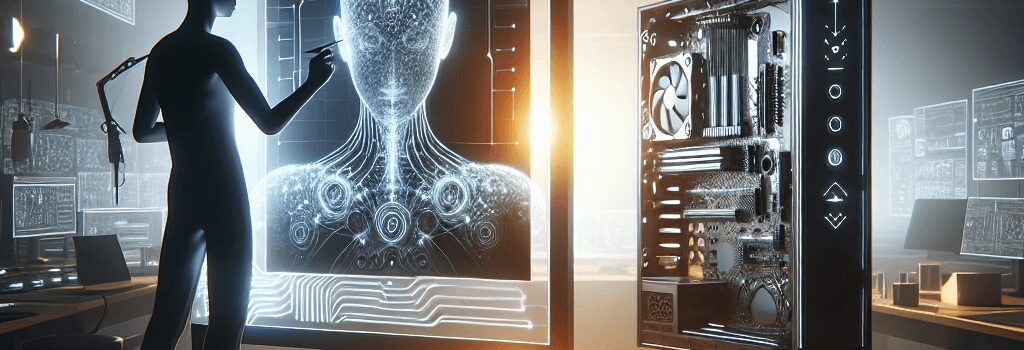Jony Ive Joins OpenAI to Transform AI Hardware and UX

On May 21, 2025, OpenAI announced that legendary Apple design chief Sir Jony Ive and his newly formed studio io will take creative and design control of OpenAI’s entire product suite. The $6.5 billion all-equity acquisition of io—founded by Ive in 2024—ushers in a new era of AI-driven hardware and immersive experiences, moving the chatbot pioneer “beyond screens” and into physical form factors.
“Thrilled to be partnering with Jony, imo the greatest designer in the world.”
—Sam Altman, OpenAI CEO
Background: Ive’s Design Legacy at Apple and Beyond
For nearly three decades, Jony Ive shaped Apple’s signature products—iPhone, iPad, MacBook and Apple Watch—with a minimalist philosophy that earned multiple design awards and helped catapult Apple to a $3 trillion valuation. After departing Apple in 2019, Ive co-founded LoveFrom, advising Ferrari on carbon-fiber chassis, Airbnb on brand refresh, and Moncler on experiential retail. In 2024, he launched io to focus on AI-centric devices, assembling a team of ~55 specialists in optics, haptics, ML research, embedded systems and industrial design.
The OpenAI–io Acquisition: Structure and Scope
- All-equity deal: OpenAI issues new shares to acquire io at a $6.5 billion valuation.
- Talent integration: io’s engineers, physicists and product developers join OpenAI’s hardware and software divisions.
- LoveFrom partnership: LoveFrom remains independent, with OpenAI as a marquee client and equity stakeholder.
- Regulatory timeline: Expected to close summer 2025, pending antitrust and securities approvals.
Moving Beyond Screens: The New Frontier in AI
Sources familiar with the collaboration told The Wall Street Journal that the project explores form factors like AR glasses, haptic headsets and AI-enabled earwear. Early prototypes feature:
- Integrated neural accelerators: Custom ASICs co-designed with NVIDIA to run GPT-5 on device.
- Edge-cloud synergy: Low-latency 5G modules that offload heavy inference to Azure’s GPU clusters.
- Adaptive form factor: Modular shells for audio, video, gesture and spatial computing.
Technical Deep Dive: Designing for AI-Powered Devices
Marrying Ive’s hallmark minimalist aesthetic with state-of-the-art AI hardware poses unique challenges. Experts highlight:
- Thermal management: Passive cooling grids inspired by Mac Studio, combined with graphene-based heat spreaders.
- Sensor fusion: Ultrawide-angle infrared cameras, LiDAR, bone-conduction microphones and haptic feedback actuators.
- Battery tech: Solid-state cells offering up to 10 hours of continuous AI inference at 65 watts.
- Software stack: A customized Linux kernel with real-time scheduling for on-board GPT execution and a Swift-based UI framework.
Industry Implications and Expert Opinions
“This partnership signals the dawn of consumer AI hardware as a design-driven category,” says Maria Chen, a principal analyst at Gartner. “Companies will need to think holistically about ergonomics, privacy and continuous software updates.”
At Computex 2025 last month, OpenAI teased a wearable prototype integrating environmental sensors and on-device personalization. Meanwhile, NVIDIA’s CEO Jensen Huang confirmed a strategic collaboration to co-develop next-gen Tensor cores optimized for natural language workloads.
Challenges Ahead: Manufacturing, Privacy & Regulation
Scaling manufacturing through Foxconn and Pegatron introduces logistical and IP considerations. Key challenges include:
- Data privacy: On-device speech and visual processing must comply with GDPR, CCPA and emerging AI regulations.
- Supply chain resilience: Securing exotic materials like graphene and specialized sensors against geopolitical disruptions.
- Regulatory scrutiny: The EU AI Act and U.S. FTC guidelines on algorithmic transparency may impact hardware capabilities.
Looking Forward: From Prototype to Mainstream
OpenAI and io plan a phased rollout, beginning with developer kits in Q4 2025 and a consumer launch in mid-2026. As design lead, Ive will oversee every aspect—from unboxing rituals to firmware updates—aiming to recreate the emotional resonance of early Macintosh experiences.
“Everything I’ve learned over 30 years has led me to this moment,” said Ive. The question on everyone’s mind: can Apple’s former design guru usher in a new generation of AI hardware that balances power, privacy and elegance?